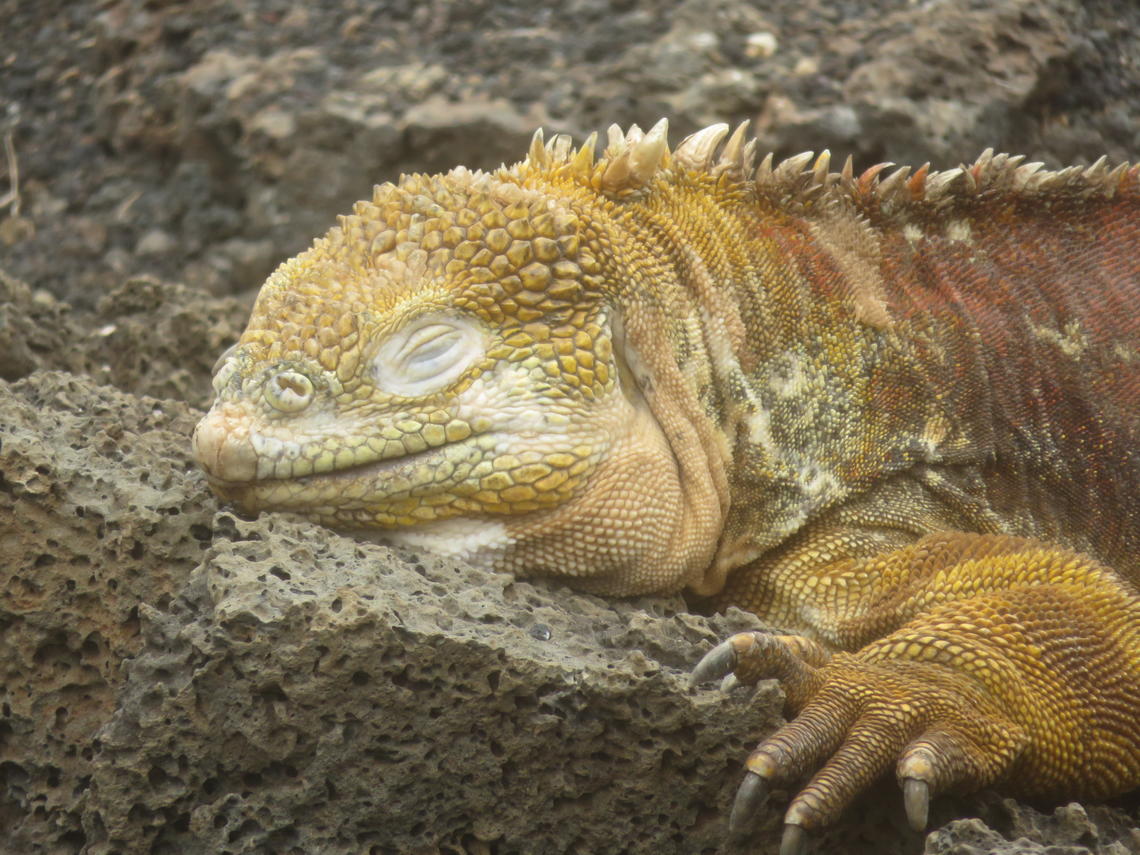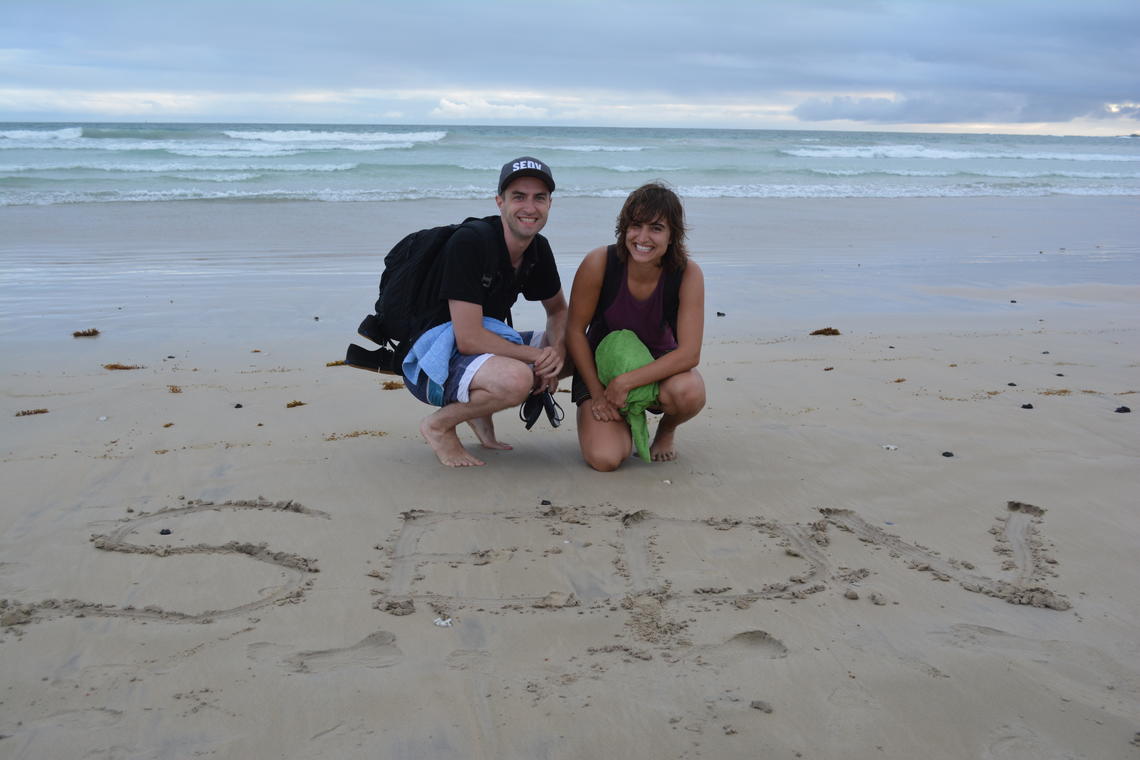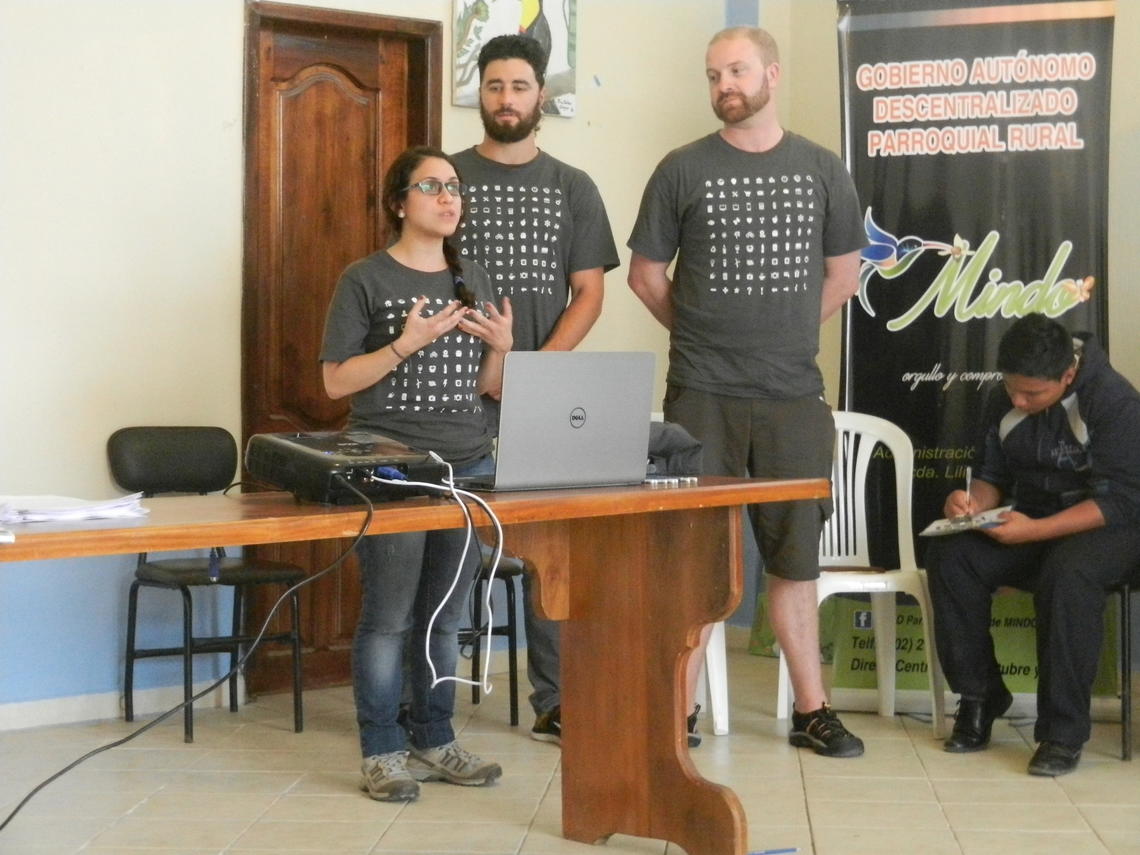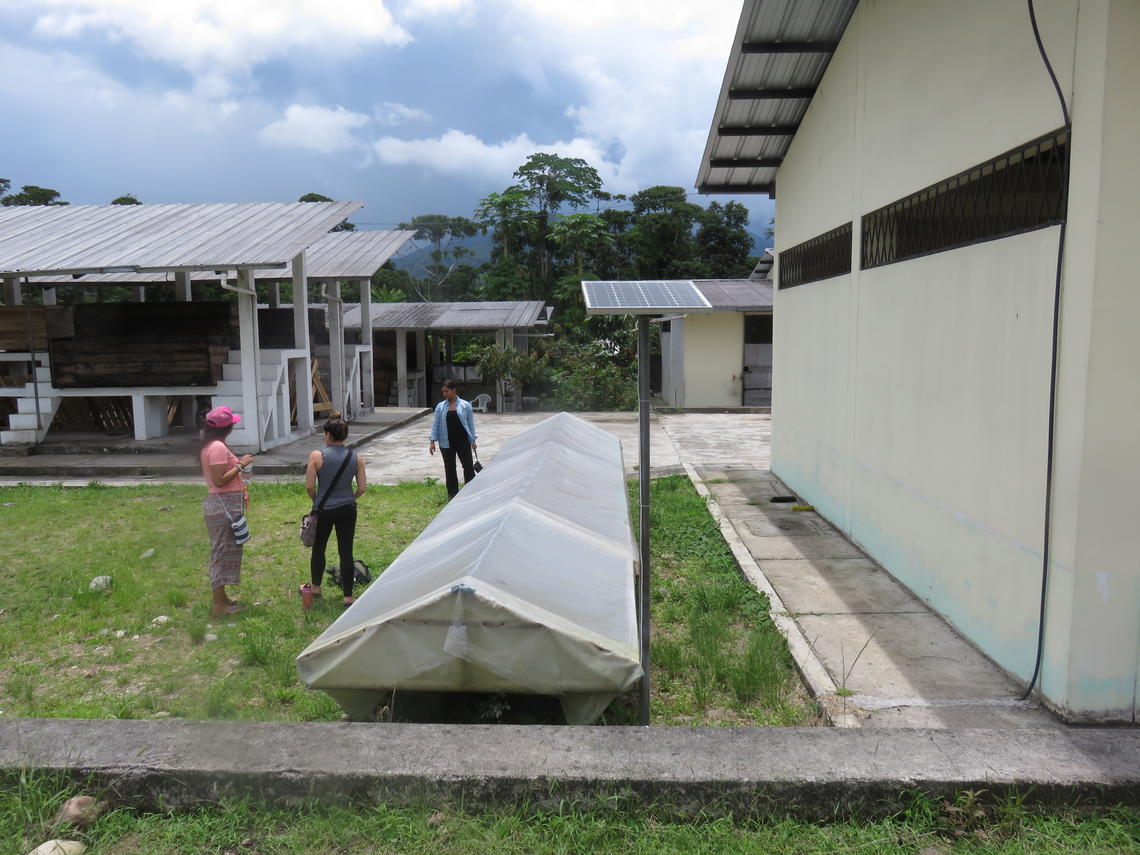
Wildlife, such as land iguanas, were a constant reminder of the regions' rich biodiversity.
Irene Herremans, University of Calgary
Oct. 18, 2016

Wildlife, such as land iguanas, were a constant reminder of the regions' rich biodiversity.
Irene Herremans, University of Calgary
A group of University of Calgary students equipped with halting “Spanglish” had no problem connecting with high school students in Ecuador — the planet´s most biodiverse country, per square metre on the planet — and helping them develop innovative eco-friendly ideas.
“They came up with everything from rainwater-harvesting technology to making artisanal soaps from used cooking oil,” said Jeff Coombs, who travelled to the South American country with nine other students.
Coombes was one of the students participating in a first-time project through the Sustainable Energy Development Master’s of Science program at the University of Calgary. They applied their classroom knowledge in an unfamiliar culture with teens, local business leaders and hotel operators. Before the trip, they were given Spanish lessons and some cultural insights. They also brought years of learning in science and sustainable practices.
Tremendous opportunity for sustainable practices
The project, spearheaded by Haskayne’s Irene Herremans and Quito-based professor David Lansdale, was a collaboration on many levels, including the funding provided by the Canadian Centre for Advanced Leadership in Business and the students’ fundraising efforts.
The communities in Ecuador, an emerging market economy with a burgeoning tourism industry, were chosen because of Lansdale’s relationships and the “tremendous opportunity” for them to become more sustainable in energy and water conservation, and waste management.
The students worked in three communities: Mindo, a leading global birding destination in the cloudforest at the base of the Andes; Puerto Ayora on the island of Santa Cruz in the Galapagos Islands; and Santa Rita, a Kichwa indigenous community in the Amazonian jungle. Each region is recognized internationally for its abundant biodiversity.

Connor Bedard and Kassy Harbottle take a break from the energy, waste, and water audits.
SEDV students and professors
Economic opportunities and financial incentives
“The biggest reward was seeing the students connect the dots in identifying that sustainability can not only be easy, but also that there can be significant economic opportunities and financial incentives available from it,” said Coombes.
Connor Bedard, another intern, experienced that first-hand while meeting and conducting energy assessments with local hoteliers on the most populated Galapagos island.
Bedard was struck by how receptive everyone was to ideas many of us in Canada take for granted. After discussing energy savings, the group realized they could increase revenues by saving money, energy and water by switching to LED lightbulbs. Another initiative was to establish a program to encourage tourists to opt out of having towels and linens washed daily.
“There’s an opportunity there to do better for the environment with simple every day things,” said Bedard.

Students Margarita Meza, Nic Ritchie, and Jeff Coombs deliver a sustainability workshop in in Mindo.
SEDV students and professors
Part of a long-term picture for local citizens
For Lansdale, a professor of entrepreneurship and administration at Universidad San Francisco de Quito, the program has long-term impact.
“The idea behind working with high school students was to empower them to take what they learned from the Calgary interns as their mentors and sharing it with their communities as agents of transformation,” said Lansdale, professor of Entrepreneurship and Administration at Universidad San Francisco de Quito.
Including the Ecuadoran high school students taps into the next generation of citizens taking initiatives into the future, and at the same time allows university interns share what they’ve learned.

Cristina Vallejo, Andria Panidisz and Jullian Haneiph assess the Wiñak Association dryer system.
SEDV students and professors
Seeing a sense of accomplishment in high school students
“We wanted the students to apply their knowledge on the ground, and then to see the sense of accomplishment for the high school students when they got their certificates; it was pretty profound,” said Herremans.
Haskayne interns conducted workshops with the high school students, who then made presentations in their communities with their new knowledge. Coombes was impressed with how clever the students’ ideas were.
During a discussion about organic waste, “One student said, ‘I could not only provide the community with fertilizer for gardens, but could have business selling gas.’ It was such an a-ha moment; it’s hard to describe,” he said.
Students also decided that plastic bags, which endanger Galapagos marine life, could be recycled by weaving them into reusable baskets.

Students celebrate the end of their internships with a dinner in Quito, Ecuador.
SEDV students and professors
Pictured above are Jillian Haneiph, Namrata Sheth, Andria Panidisz, Connor Bedard, Margarita Meza, Nic Ritchie, Cristina Vallejo, Manual Preusser, Jeff Coombs, Irene Herremans, Kassy Harbottle, David Ince, and Alonso Alegre. Anil Mehrotra, former SEDV director, and David Lansdale, Ecuadorian partner, are not pictured but are also involved in the internships.
Sustainability not about just education
Those are the kinds of ideas that Jillian Kareema Haneiph got enthusiastic about while working with 80 students in two communities near Archindona.
“It was a powerful reminder that creating a path towards greater sustainability demands more than just education, it requires action.”
For Bedard, the hands-on work with the communities made him feel more passionate about sustainable energy. “The program was fantastic; it’s the best thing I ever did.”
From a teacher’s perspective, Herremans said, “It’s great to see leaders grow before your eyes ... and to be in a position to see them apply what they learned in a classroom.”